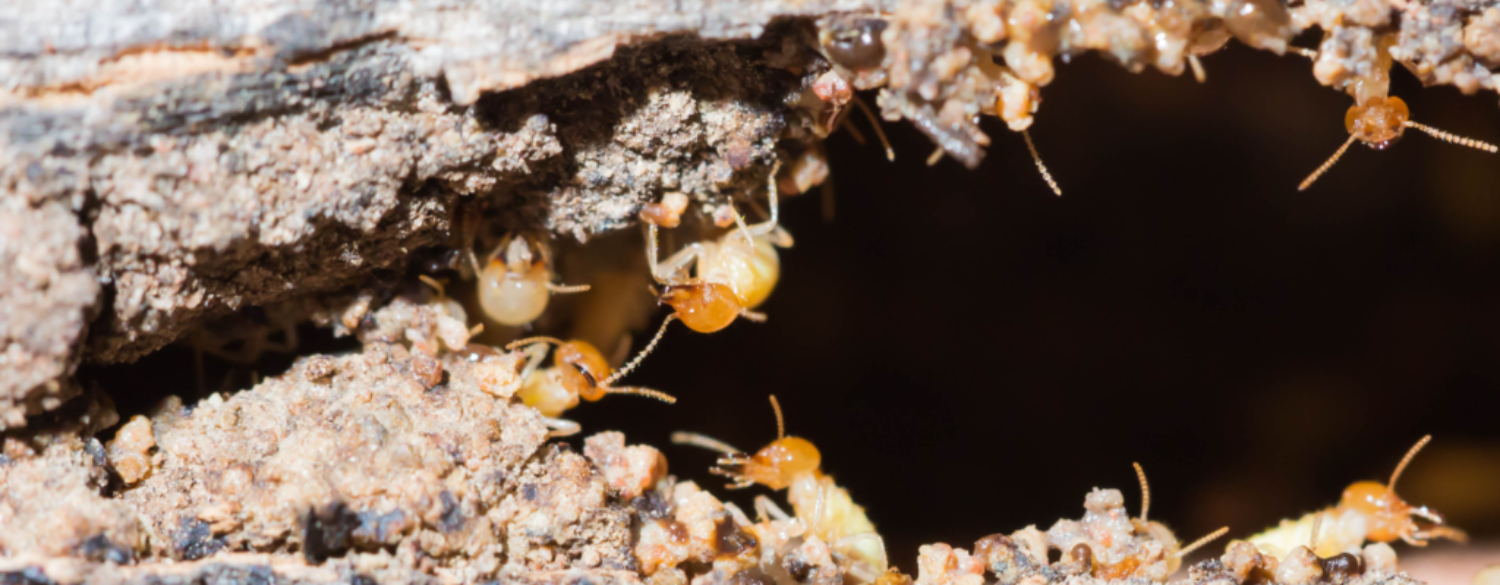How to Prevent, Identify and Eliminate Termites
There’s about 40 different species of termites that can be found in the U.S. and they cause approximately $5 billion in damage each year. Unfortunately, homeowner’s insurance doesn’t cover termite damage. If you suspect that your home has termites, or if your home inspector has identified some termite red flags, read on for more info about how to deal with and prevent termite damage.
What are termites?
Termites are insects with wings of equal length that live in underground colonies. They feast on decomposing plant materials and live in societies structured around a queen, soldiers and workers. Termites may look similar to ants, but they have straight antennae and thicker abdomens than ants.
Termites cannot chew through concrete, but they can crawl through tiny cracks within concrete to get to wooden beams and structures within your home.
Where do they come from and what causes infestations?
Certain species of subterranean termites are native to the Western and Eastern United States. Formosan termites were brought over to North America a few centuries ago and can destroy wood structures faster than other native subterranean species.
Subterranean termites come up through the ground and into your home by way of mud tubes or tunnels that wind around concrete or metal. The nesting structures for one termite colony can be found within a 300 ft. diameter around your home.
Common signs of termites
Termites can be elusive creatures, so you’ll notice signs of their damage before you see the insects themselves. When you observe holes in wood with a honeycomb appearance, you can be sure there’s a termite infestation.
If you find a swarm indoors, that’s a sign that termites have already destroyed your home’s wood structural elements.
Prevention and treatment
Use these four termite prevention tips to help identify an infestation.
- Inspect the quality of wood around your home’s basement, attic, or deck areas and tap on it to hear if it sounds hollow. If it does, that could be a sign of termite infestation.
- Observe moisture buildup and try to keep indoor areas as dry as possible.
- Discard any unnecessary wood debris around your home, and make sure your firewood pile is not too close to your home.
- Ensure that mulch is not piled up too close to your home’s foundation.
If there is a termite infestation, get help from a pest professional because termites are very difficult to treat on your own.
A pest professional uses several different methods to treat termite infestation. One method is applying a liquid treatment around the home’s foundation by digging a trench filled with termiticide.
Another method is inserting termite bait stations around the property. A bait station is a hollow plastic cylinder filled with plant material and a slow-acting insecticide that shortens the termite growth process and kills them while they molt. Within weeks of eating the bait, termites spread the insecticide amongst the colony and die in waves.
A third method is tenting, a process where the entire home is covered in a tarp and termiticide is sprayed into it. This method will kill drywood termites, but isn’t effective for subterranean termites whose colonies spread underground beneath your home.
If you suspect your home has a termite problem, call South Sound Inspections to get an expert opinion today.



